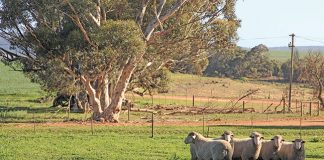
For example, many farmers follow the principle that a leaf crop should be planted after a root crop. Generally, this is a beneficial practice, but it can end up achieving nothing.
In the case of carrots (a root crop) and Swiss chard (a leaf crop), for instance, both vegetables are vulnerable to root knot eelworm. So rotating between them will not get rid of the pest.
Similarly, if beet cyst eelworm is present, you should avoid following beetroot with a Brassica such as cabbage, as the build-up of the pest will continue. (If the pest is not on the farm, of course, this rotation presents no problem at all.)
For the same reason, it is a mistake to follow tomatoes with an eelworm-susceptible crop, unless you use one of the new tomato hybrids that are resistant to eelworm.
Diseases present the same problem. If there is a smattering of Sclerotinia on a cabbage crop, it is risky to follow with beans, as they are also susceptible to this pathogen.
Likewise, black leg in one Brassica crop will infect another Brassica crop if undecomposed woody material from the stems is left in the soil. You might even have to wait two years before planting a Brassica crop.
Using the climate to your advantage
Where you have a limited number of crops to rotate, you may be able to plant the same crop again if climatic conditions allow.
Some years ago, while working for a vegetable processor, I had a crop of cabbages that had extensive black rot on the outer leaves. My boss wanted another cabbage crop planted for his factory as soon as possible.
As no other land was available, I worked the cabbage residue, which contained undecomposed leaves with black rot, into the soil and simply planted the new cabbage seedlings in it.
I knew from experience that the change of season into winter would prevent the black rot from developing on the new crop! In this way, I was able to harvest a good, disease-free crop, although the pathogen was present in abundance.
A final point: take weeds into consideration when you carry out crop rotation, as they too may be a host to the pest or pathogen you are rotating for.
Do your homework
The bottom line is: don’t rotate for the sake of rotation. Consider the reasons for doing so. If you do it wrongly, you will simply be wasting your time, and the pest or disease you are trying to control will remain a threat.
Equally, be aware of the dangers of continuing with the same crop in a land over a number of years. If you can grow the crop without a disease or pest manifesting, well and good, but you need to be alert to the potential hazards and keep an eye open for them.
Bill Kerr is a vegetable specialist and a breeder of a range of vegetables.











